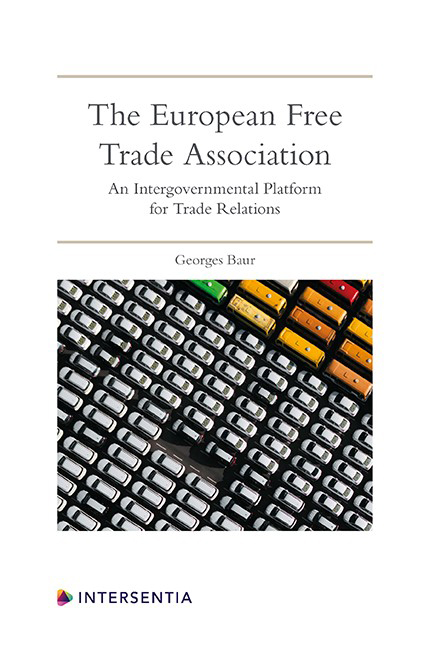Book contents
- Frontmatter
- Foreword
- Preface
- Acknowledgements
- Contents
- List of Tables and Figures
- Chapter 1 What is EFTA?
- Chapter 2 Short Historical Overview
- Chapter 3 Substantive Fields of Activity of EFTA
- Chapter 4 EFTA Institutions, Membership, Scope and Other General Provisions
- Chapter 5 Trade Relations with Third Countries and Groups of Countries
- Chapter 6 The Relations between the EFTA States and the EU/EEA
- Chapter 7 Conclusion: EFTA Membership for the UK Post-Brexit?
- Convention Establishing the European Free Trade Association
- Annex K. Free Movement of Persons (Chapter VIII)
- Annex T. Arbitration (Art. 48)
- Index
- About the Author
Chapter 6 - The Relations between the EFTA States and the EU/EEA
Published online by Cambridge University Press: 21 July 2020
- Frontmatter
- Foreword
- Preface
- Acknowledgements
- Contents
- List of Tables and Figures
- Chapter 1 What is EFTA?
- Chapter 2 Short Historical Overview
- Chapter 3 Substantive Fields of Activity of EFTA
- Chapter 4 EFTA Institutions, Membership, Scope and Other General Provisions
- Chapter 5 Trade Relations with Third Countries and Groups of Countries
- Chapter 6 The Relations between the EFTA States and the EU/EEA
- Chapter 7 Conclusion: EFTA Membership for the UK Post-Brexit?
- Convention Establishing the European Free Trade Association
- Annex K. Free Movement of Persons (Chapter VIII)
- Annex T. Arbitration (Art. 48)
- Index
- About the Author
Summary
INTRODUCTION AND DEVELOPMENT OF PRINCIPLES
The relationship between EFTA and the EU has been, since its inception, the second policy objective of EFTA. As shown earlier, real cooperation only materialised after the EEC had agreed to open accession negotiations with Denmark, Ireland, Norway and the UK in 1969, a decade after both blocs were founded. This chapter will trace the development of the EFTA states‘ increasingly comprehensive integration between Denmark's and the UK's move from EFTA to the EU in 1973 until the creation of the EEA and the sectoral (bilateral) agreements between Switzerland and the EU respectively. This is, largely, still the situation that exists today.
The Free Trade Agreements (FTAs) between the EEC and the remaining EFTA states led to a European free trade area but not yet, however, to anything close to what we know today to be internal market participation. As discussed earlier, this process was a lengthy one with a great deal of political reckoning on both sides and at times very difficult negotiations. It took another 20 years from the conclusion of the EEC-EFTA FTAs until the signing of the EEA Agreement.
In the process of coming to terms with having non-EEC/EC/EU member states participating in the EU's internal market, the EU had to develop some principles to, on the one hand, foster primarily economic integration in Europe while, on the other hand, maintaining and protecting the Community (or Union) of and amongst its member states.
These so-called ‘Interlaken Principles’ gained a wider publicity after a speech by the then European Commissioner for External Relations and Trade Policy, Willy de Clercq, at the ministerial meeting in Interlaken in 1987. These were, however, developed earlier as a follow-up to the 1984 Luxembourg Declaration on extending‘ Community-EFTA cooperation “with the aim of creating a dynamic European economic space of benefit to their countries”’. Cooperation should be guided by the following ‘four principles’:
1. ‘Community integration and the Community's independent powers of decision must under no circumstances be affected.
2. The elimination of technical barriers to trade and the simplification of administrative formalities at Community-EFTA frontiers are a logical extension of the Free Trade Agreements and should be pursued parallel to the progressive integration of the Community's internal market.
- Type
- Chapter
- Information
- The European Free Trade AssociationAn Intergovernmental Platform for Trade Relations, pp. 115 - 164Publisher: IntersentiaPrint publication year: 2020
- 1
- Cited by



